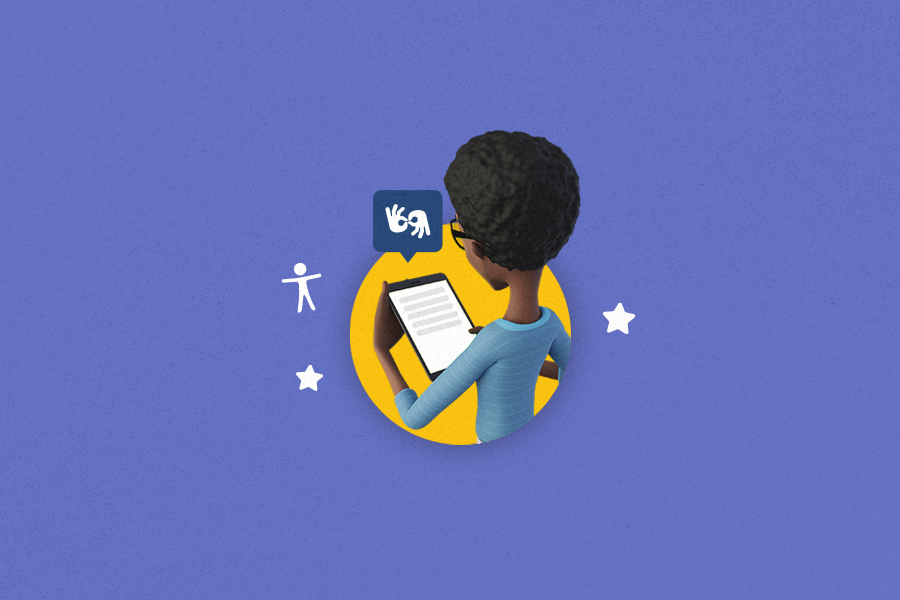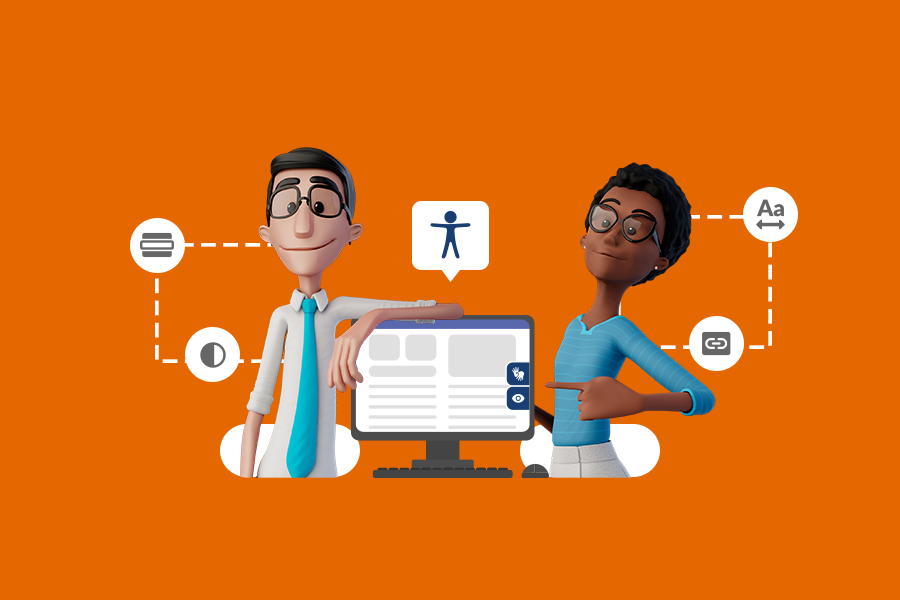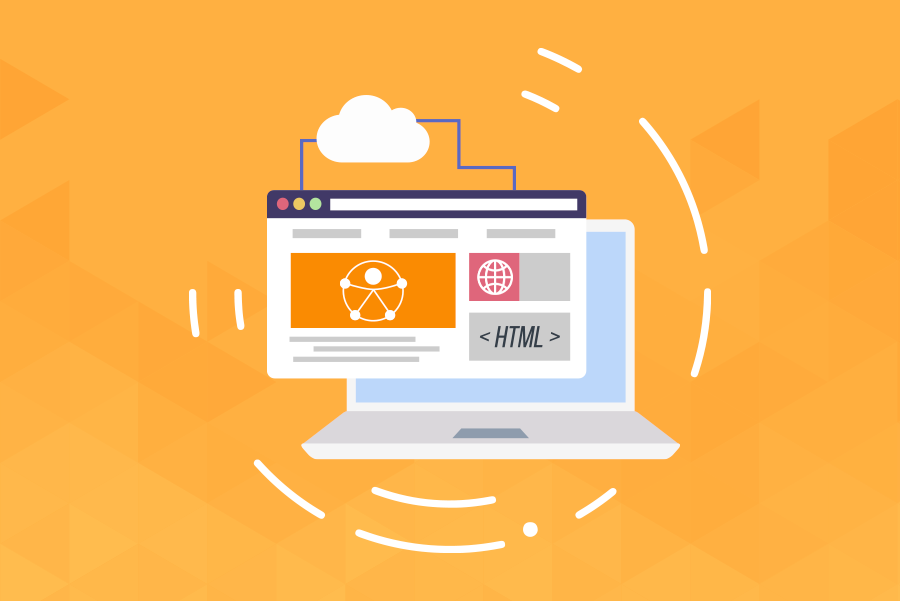
What is assistive technology, who benefits from it and examples

In a nutshell, assistive technology consists of different services and devices, technological or not, that aid people with disabilities in their daily lives. Don’t worry, we will get more into this definition later. First, it is important for you to understand a bit more about the accessibility scenario around the globe. Nowadays, over 1 billion people need at least one assistive device. By 2030, this number will rise up to 2 billion people, especially because of an increase in noncommunicable diseases and the natural aging of the population.
Unfortunately, most people still don’t have easy access to assistive technologies, resulting in the fact that only 1 in 10 actually have the services and devices they need. The main reasons behind this are the high costs, lack of financing and awareness. So in an effort to try to change this, let’s learn more about the importance of assistive technology, the essential roles they play in different environments and how to choose the right one for you.
What is assistive technology?
According to the Technology Related Assistance to Individuals with Disabilities Act (Tech Act), assistive technology devices consist of “any item, piece of equipment, or product system, whether acquired commercially off the shelf, modified, or customized, that is used to increase, maintain, or improve functional capabilities of individuals with disabilities”. It is important to understand that different types of disabilities require different kinds of assistive technologies.
The Tech Act also describes assistive technology services as “any service that directly assists an individual with a disability in selection, acquisition or use of an assistive technology device.”
Also known as AT, assistive technology is actually assured by law. This means that all of American states and territories are equipped with federal funding to provide the necessary devices, services and accessibility programs for those who need it.
With the technological development we have been witnessing over the past years, ATs are becoming more complex and more accessible in our daily lives, especially with software advancements. Artificial Intelligence is playing a huge role in this evolution, being able to create visual recognition tools, real time text-to-speech transcriptions and even automated Sign Language translations.
What is assistive technology in education?
Access to assistive technology in the educational field is super important, since it can assist students with disabilities to properly learn, without facing as many barriers. This is why the Individuals with Disabilities Education Act (IDEA) was created.
According to IDEA, educational institutions must provide students with disabilities with individualized education programs. Usually for those, assistive technology is required. However, access to those ATs is not immediate. The person must go through a series of evaluations to prove they need those services and devices, and then it still has to be approved.
In general, educational institutions need to ensure that children with disabilities have access to a Free Appropriate Public Education (FAPE), in the Least Restrictive Environment (LRE). Basically, this means that they must make sure that the kids are not taken away from the regular educational environment, that they are interacting with other students and participating in the same classes and activities. Also, schools need to provide all the necessary services for them, being it transportational, developmental and psychological, among others. That is where the assistive technologies come into play.
What is assistive technology in computers?
An important concept to understand when talking about assistive technology in computers is digital accessibility. Basically, it is a series of solutions that facilitate browsing the web for people with disabilities, in a way that is autonomous and independent.
When it comes to computers, assistive technologies are usually very high technology, such as the development of special-purpose computers. Also, it is related to creating different softwares and hardwares, that can come in any shape or size, to assist those with disabilities when surfing the internet and dealing with the digital world. Some examples are screen readers, augmented keyboards and also virtual Sign Language translators. We will dive deeper into other examples of AT later on, so stay tuned.
What is assistive technology in health and social care?
Assistive technology can have a huge positive impact on the health and well-being of someone with a disability or an elder. It also has some great unexpected socioeconomic benefits. For instance, it can enable the elderly to live more independently at home, delaying or preventing the need for long-term care systems or institutions.
Also investing in assistive technologies for the population now is even a way for governments to spare future healthcare costs that could have been avoided. For example, providing wheelchairs for those who need it helps people to have access to education and the job market, while also reducing the risk of pressure sores and contractures.
Now you must be thinking it is a win-win situation for both the population and the government, am I right? Unfortunately assistive technology devices are often excluded from healthcare policies, leading to high investments from those with disabilities and their families that need it, without mentioning the lack of professionals in the area with the necessary skills to help this share of the population. Definitely there is still a long way to go when it comes to making assistive technology accessible in the health and social care environment.
Who can benefit from assistive technology?
Despite what you may think, many people can benefit from assistive technologies! The main people positively impacted are those with disabilities, who can use assistive technology as a means of interacting more autonomously with the world without as many barriers, being more confident and independent.
On top of that, the elderly and people with temporary limitations also benefit a great deal. For example, ramps are essential for those in wheelchairs, but also extremely helpful from parents with a baby stroller.
What is an example of assistive technology?
There are many types of assistive technology, which can be categorized into 5 main different domains: cognitive & academic, adaptive, communication, physical and social emotional. It is also important to know that ATs can be tailored to the user’s specific needs, so it has a wide range of variety and diversity.
Some other examples of assistive technology that we haven’t yet mentioned in this article are:
- Hearing aids;
- Screen magnifiers;
- Touchscreen displays;
- Speech recognition;
- Closed captions;
- Tactile materials;
- Prosthetic devices;
- Adaptive tools, such as pencil grips, timers and organizers;
- Automated Sign Language translators.
How do you choose the right assistive technology?
There are many directions and recommendations you can take when choosing the right assistive technology for you, but maybe the most important tip is to select an AT that targets one specific activity at a time.
Usually, you can count on the help of a team of professionals and consultants trained to indicate the best assistive technologies for each specific need. This group of people can include doctors, teachers, rehabilitation specialists, occupational therapists and even representatives from the companies that manufacture the assistive technology in question.
Assistive technology frequently asked questions
We have put together some of the most frequently asked questions to help you understand more on how to have access to assistive technology, come check it out.
How can a student obtain assistive technology devices and services?
Remember FAPE, Free Appropriate Public Education? So, you can only have access to it if you have a written statement, also known as IEP (Individual Education Program), with a detailed description of the services and devices you need. Then, the IEP team will determine whether or not you, the student, need any assistive technology.
According to the IEP, you may be entitled to assistive technology devices or services either if you need some kind of differentiated education, or if you require supplementary aid in school. In both cases, the educational institution is then required by law to provide you with everything you need to properly advance in the general curriculum and to participate in school activities with your colleagues.
How can someone obtain funding for assistive technology?
It depends on multiple factors, but here are some of the available resources:
- Schools: as we have seen, they pay for general special education learning materials and assistive technology specified in the IEPs.
- Insurance companies and government programs: they pay for certain ATs if you have a doctor’s prescription of it being a necessary medical or rehabilitation device.
- Employers: they may pay for assistive technology as long as it is essential for you to be able to perform your essential work functions.
- Nonprofit organizations.
Can a student take their assistive technology home?
Yes, but only if the student needs it for FAPE (Free Appropriate Public Education). For example, if they need it in order to do their homework. The IEP team, along with the student and their parents, will determine this on a case-by-case basis.
Conclusion
As you have learned, assistive technology is an essential tool for people with disabilities to live their lives independently and for their well-being. As a matter of fact, it is even included as part of the United Nations’ 2030 Agenda for Sustainable Development.
It is our role as a society to raise awareness for the need of assistive technology, and defend its accessible and affordable use in our social circles.


